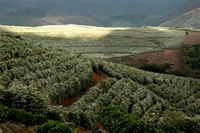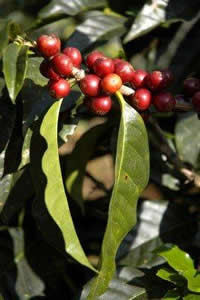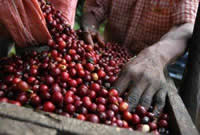



Selection
The cultivation of coffee takes place on both sides of the equator, in a tropical climate. Among the many varieties of the coffea strain, the two most common are arabica and robusta. All the finest choices offered by J. J. Looze Coffees, whether pure or mixed blends, are arabicas.
Delicate and demanding, the cultivation of the arabicas differs greatly from that of the robustas. As a result, the taste characteristics of the arabicas are extremely rich and have no equivalent elsewhere. The level of caffeine in the arabicas is also half as high as that in the robustas which further have the disadvantage of offering a taste that is bitter, full bodied and without any subtlety.
With arabicas, the predominant taste characteristic lies in their sourness! Of course, this term should not be understood in a pejorative sense. In fact, the sourness of the arabicas is the element which, after roasting, will determine the subtle flavours which these fine blends give off. This sourness is determined by the demanding method of cultivation that this type of coffee requires; cultivation situated at altitude, in rich soils and protected from the sun by the shadow of the banana trees and other shrubs.
All the varieties of coffee which we offer come from plantations where a selective harvesting method is practised, which is to say that only the red berries, which have reached a state of maturity, are picked. This method, carried out manually, is more expensive and reserved for the noblest varieties of coffee which offer the most delicate flavours.
Obviously, alongside this traditional method, other swifter and less expensive methods of collection have been developed. The latter comprise systematically picking, at a specific time, all the berries, whether they are ripe or not. Of course, the introduction of these green berries in the roasting process does impact the taste; which is why we refuse to do it.
We offer exclusively coffees of which the beans, when recovered from the berry, have been subjected to wet processing. This means that the pulp is removed from each bean before subjecting them to fermentation in large tanks of water for approximately 24 hours before then being dried. The beans produced by this process will have a fine bluish tint and the aroma that they give off after roasting is unparalleled.
Note that the use of dry processing with coffees of a lesser quality, such as the robustas, will produce a beverage that is full-bodied but lacking in aroma.





